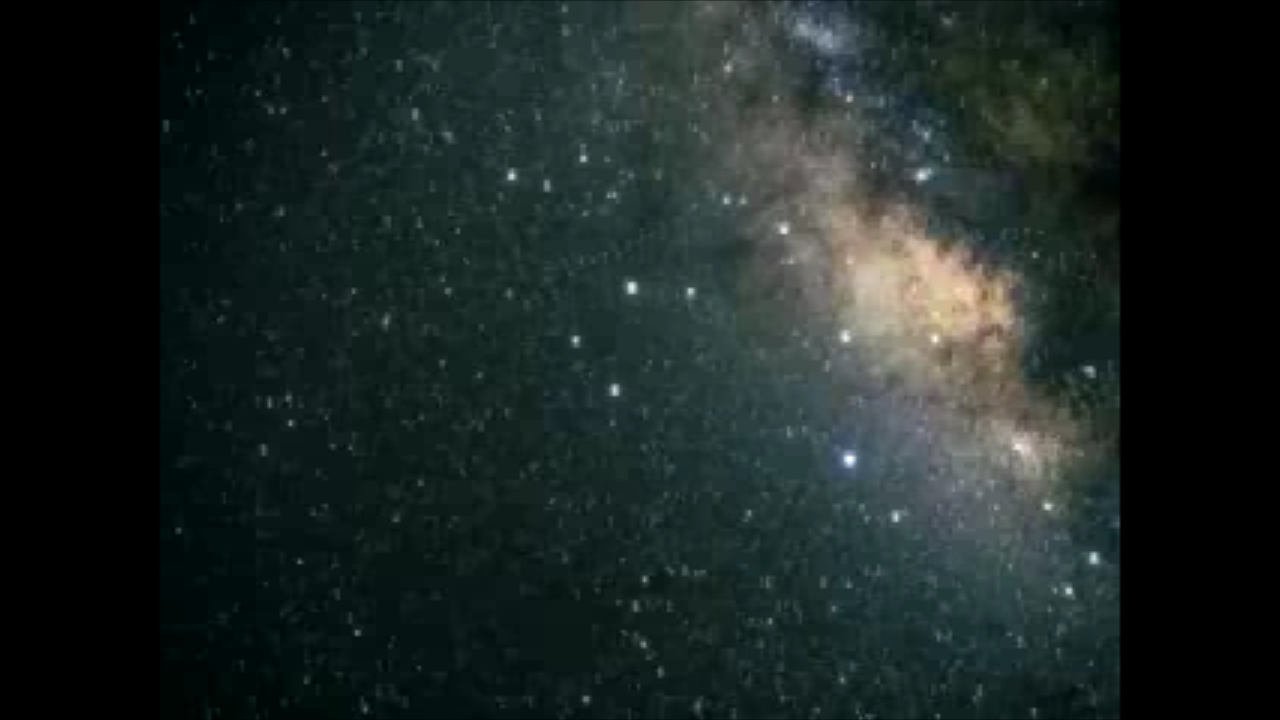1 min read
Globular Cluster M22 (inset shows entire cluster)
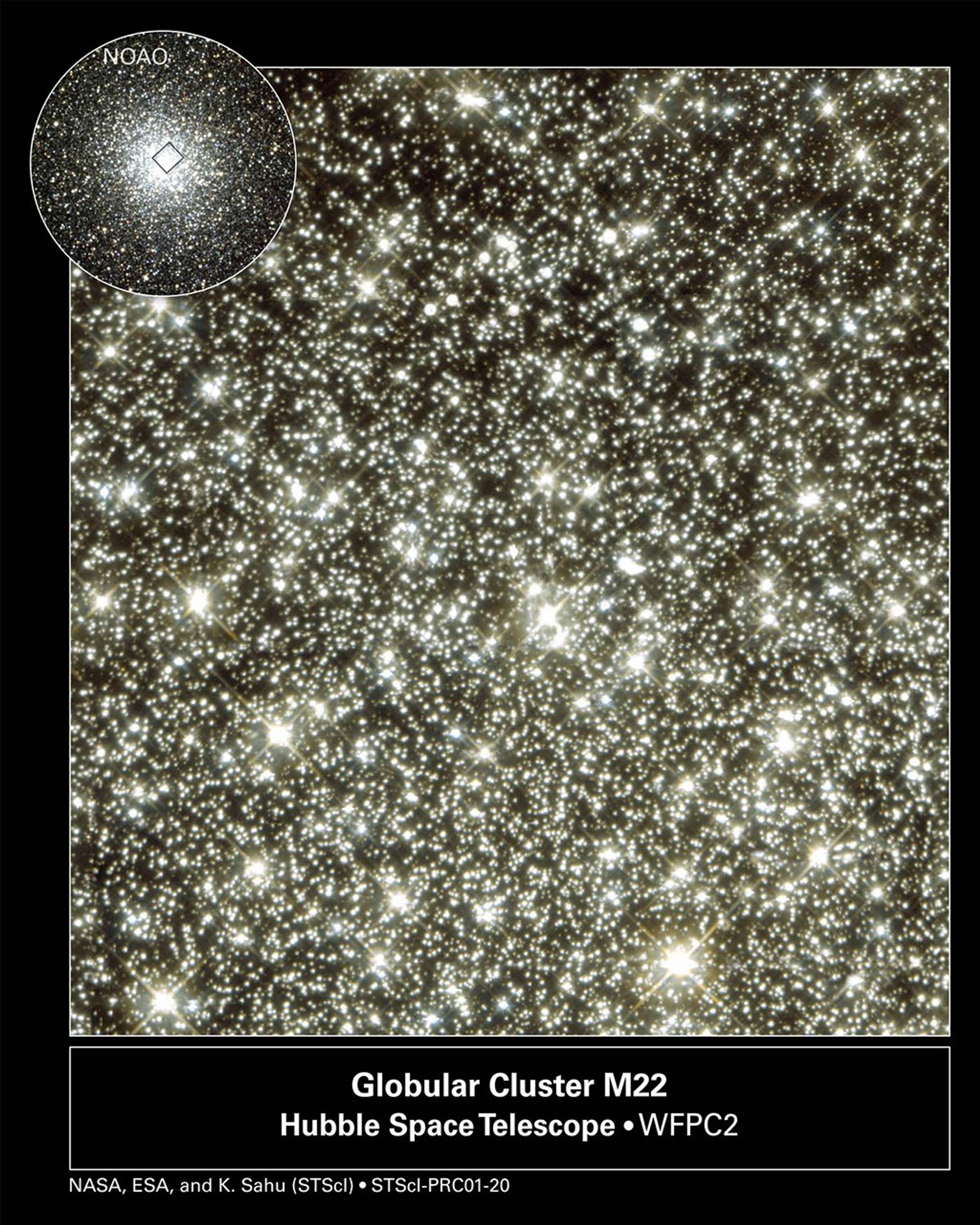
Piercing the heart of a glittering swarm of stars, NASA's sharp-eyed Hubble Space Telescope unveils the central region of the globular cluster M22, a 12- to 14-billion-year-old grouping of stars in the constellation Sagittarius. The telescope's view of the cluster's core measures 3.3 light-years across.
The stars near the cluster's core are 100,000 times more numerous than those in the Sun's neighborhood. Buried in the glow of starlight are about six "mystery objects," which astronomers estimate are no larger than one quarter the mass of the giant planet Jupiter, the solar system's heftiest planet.
The mystery objects are too far and dim for Hubble to see directly. Instead, the orbiting observatory detected these unseen celestial bodies by looking for their gravitational effects on the light from far distant stars. In this case, the stars are far beyond the cluster in the galactic bulge, about 30,000 light-years from Earth at the center of the Milky Way Galaxy. M22 is 8,500 light-years away. The invisible objects betrayed their presence by bending the starlight gravitationally and amplifying it, a phenomenon known as microlensing.
From February 22 to June 15, 1999, Hubble's Wide Field and Planetary Camera 2 looked through this central region and monitored 83,000 stars. During that time the orbiting observatory recorded six unexpectedly brief microlensing events. In each case a background star jumped in brightness for less than 20 hours before dropping back to normal. These transitory spikes in brightness mean that the object passing in front of the star must have been much smaller than a normal star. Hubble also detected one clear microlensing event. In that observation a star appeared about 10 times brighter over an 18-day span before returning to normal. Astronomers traced the leap in brightness to a dwarf star in the cluster floating in front of the background star.
The inset photo shows the entire globular cluster of about 10 million stars. M22 is about 60 light-years wide. The image was taken in June 1995 by the Burrell Schmidt telescope at the Case Western Reserve University's Warner and Swasey Observatory on Kitt Peak in Arizona.
About the Object
- R.A. PositionR.A. PositionRight ascension – analogous to longitude – is one component of an object's position.18h 36m 24.21s
- Dec. PositionDec. PositionDeclination – analogous to latitude – is one component of an object's position.-23° 54' 12.2"
- ConstellationConstellationOne of 88 recognized regions of the celestial sphere in which the object appears.Sagittarius
- DistanceDistanceThe physical distance from Earth to the astronomical object. Distances within our solar system are usually measured in Astronomical Units (AU). Distances between stars are usually measured in light-years. Interstellar distances can also be measured in parsecs.2.6 kpc (8,500 light-years)
- DimensionsDimensionsThe physical size of the object or the apparent angle it subtends on the sky.This image is roughly 1.3 arcminutes (roughly 3.3 light-years) wide. The entire globular cluster is roughly 24 arcminutes across.
About the Data
- Data DescriptionData DescriptionProposal: A description of the observations, their scientific justification, and the links to the data available in the science archive.
Science Team: The astronomers who planned the observations and analyzed the data. "PI" refers to the Principal Investigator.Principal Astronomers: K. Sahu, S. Casertano, M. Livio, R.Gilliland (STScI), N. Panagia (ESA/STScI), M. Albrow and M. Potter (STScI) - InstrumentInstrumentThe science instrument used to produce the data.HST>WFPC2
- Exposure DatesExposure DatesThe date(s) that the telescope made its observations and the total exposure time.February - June, 1999
- FiltersFiltersThe camera filters that were used in the science observations.F555W (V) and F814W (I)
- Object NameObject NameA name or catalog number that astronomers use to identify an astronomical object.M22; NGC 6656
- Object DescriptionObject DescriptionThe type of astronomical object.Globular Cluster
- Release DateJune 27, 2001
- Science ReleaseHint of Planet-Sized Drifters Bewilders Hubble Scientists
- CreditHubble image: NASA, Kailash Sahu, Stefano Casertano, Mario Livio, Ron Gilliland (Space Telescope Science Institute), Nino Panagia (European Space Agency/Space Telescope Science Institute), Michael Albrow and Mike Potter (Space Telescope Science Institute); Ground-based image: Nigel A.Sharp, REU program/AURA/NOAO/NSF
Related Images & Videos
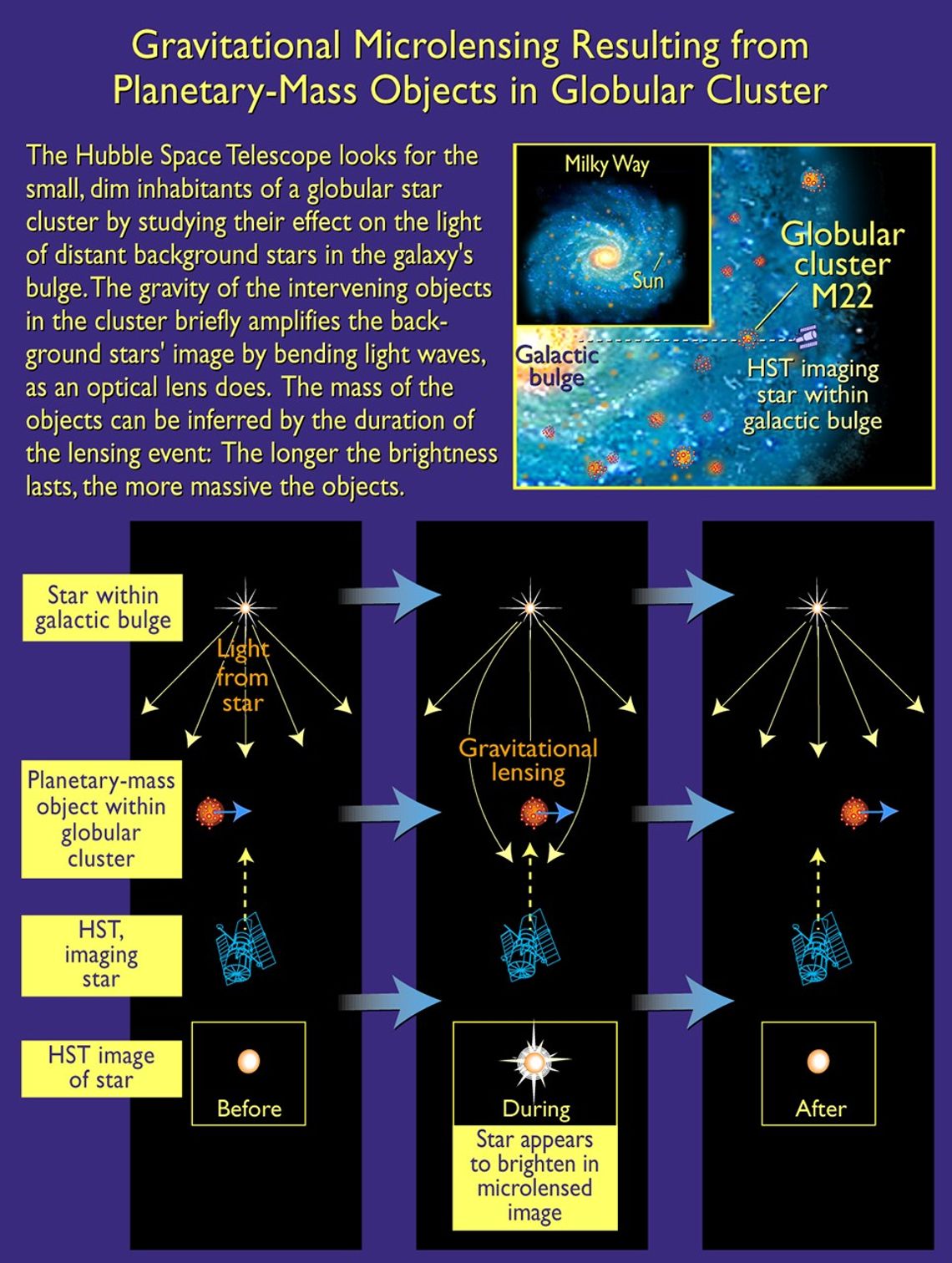
Gravitational Microlensing Resulting from Planetary-Mass Objects in a Globular Cluster
Hubble Space Telescope looks for the small, dim inhabitants of a clobular cluster by studying their effect on the light of distant bakground stars in the galaxy's bulge. The gravity of the intervening objects in the cluster briefly amplifies the background stars' image by...
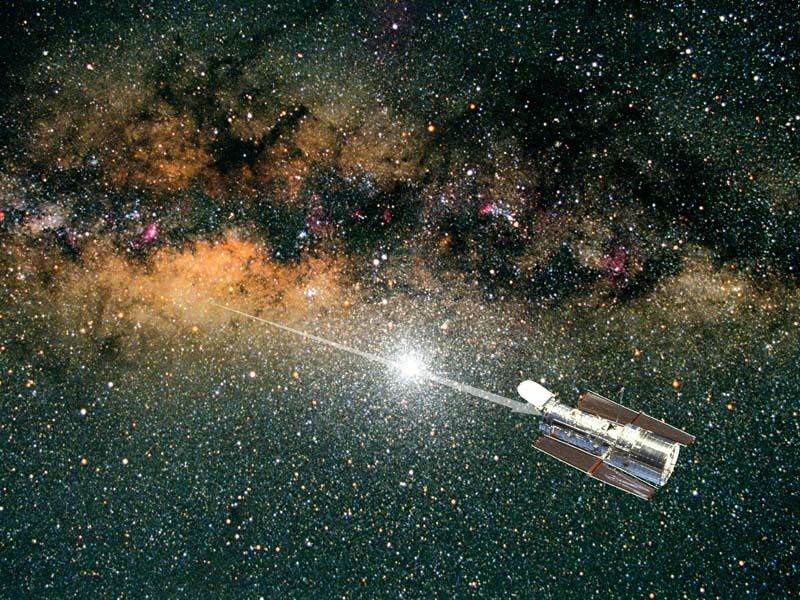
Alignment of Hubble, Star Cluster and Galactic Bulge for Microlensing Observation
This is a stylized view of a unique Hubble Space Telescope observation to search for low-mass objects residing in the core of the globular star cluster M22 (white clump of stars near image center). Because the objects are too dim to see directly, astronomers used Hubble's sharp...
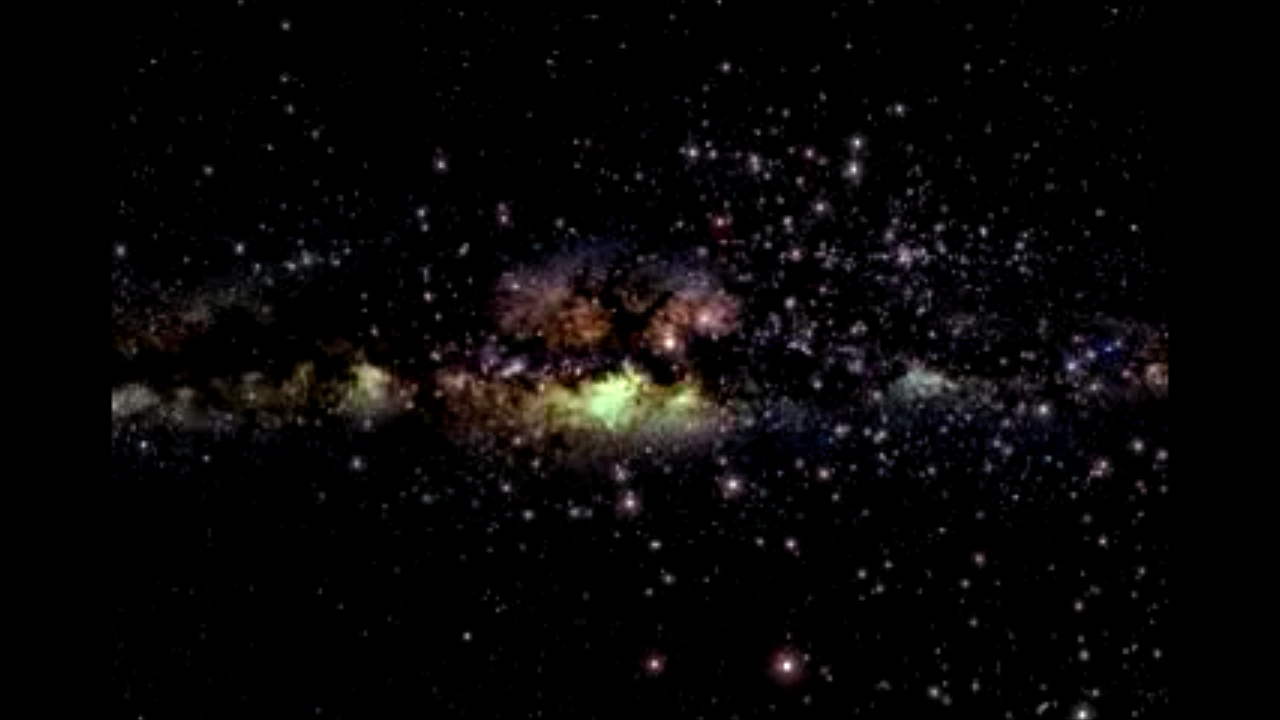
Animation of Gravitational Microlensing
Animation begins outside a globular star cluster similar to M22, with the center of the Milky Way in the distance. The camera flies through the center of the cluster and rests with a dark object in the distance. This object, a suspected brown dwarf, passes in front of a star in...
Share
Details
Claire Andreoli
NASA’s Goddard Space Flight Center
Greenbelt, Maryland
claire.andreoli@nasa.gov



























